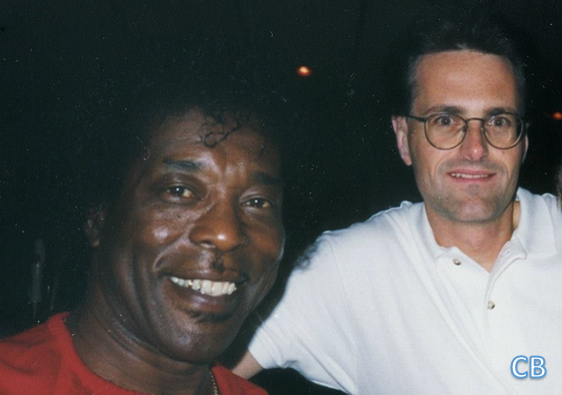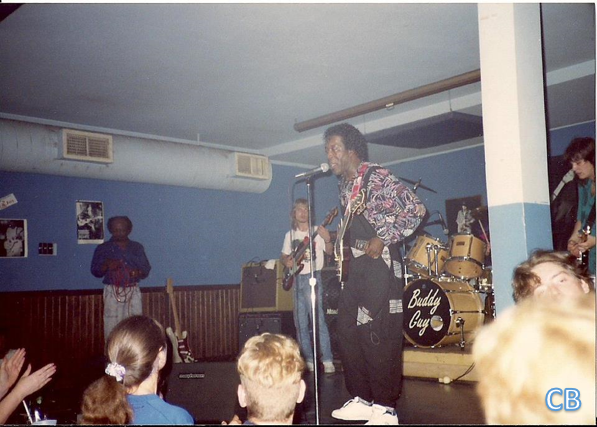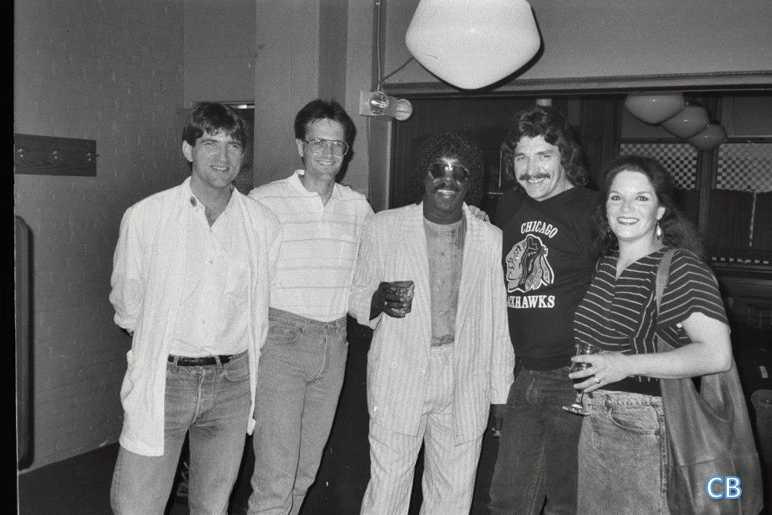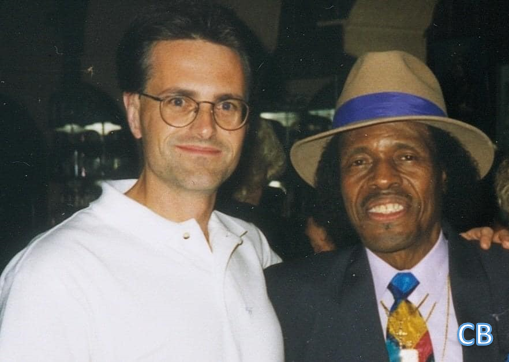Essential Blues Recording
Buddy Guy – Guy Imparts His Blues On An Eager South Side Chicago Audience
Buddy Guy – Buddy Guy Live At The Checkerboard Lounge, Chicago – 1979 – JSP Records JSP CD 201
423 E. 43rd Street in Chicago was the embodiment of the blues for many of us seeking to hear unvarnished real blues in an environment far away from what was being presented in the myriad north side Chicago clubs that dotted the landscape. That’s not in any way a knock on B.L.U.E.S. and Kingston Mines, two clubs that co-existed virtually across the street on N. Halsted from one another for many years (B.L.U.E.S. is now closed, a victim of the pandemic, and it’s re-opening remains very tenuous, at best). No, both clubs have storied histories of the most celebrated of Chicago blues artists gracing their stages week-after-week, places where the upper echelon of blues legends came to play, and where blues titans such as Sunnyland Slim held-down regular weekly gigs. That stretch of street was hallowed blues ground.
Other north side blues establishments played vital roles, as well, in offering blues to the north side blues enthusiast masses. The Wise Fools Pub, B.L.U.E.S. etcetera, Alice’s Revisited, Biddy Mulligan’s, Earl Of Old Town, Elsewhere On Lincoln, John Brim’s House Of Blues Broadway, Lilly’s, Orphan’s, Quiet Knight, and many more venues were spread across Chicago’s north side, ensuring performing opportunities for the city’s blues artists that fed a blues-hungry population with exposure to a music and culture it found fresh and exciting.
But where the blues in Chicago was at its rawest and most honest was in the taverns and joints on the south side (we’ll talk about the west side at another time) where the blues was yet another patch in the fabric of urban life. It was heard in places where neighborhood residents would unwind after the long day’s toils, scenes that were reprieves for whatever else was going on in life, where folks met to have conversation and drinks, momentarily escaping the pressures of the metropolitan backdrop.
Places with names such as Artis’ Lounge, Burning Spear, Expressway Lounge, Florence’s, High Chaparral, Missing Link Lounge, Palmer’s Lounge, and Pepper’s, among so many other joints, presented blues to the locals and those curious to experience the music in its most authentic form.
Which brings us to the blues that Buddy Guy presented to an eager, enthusiastic audience as heard on Buddy Guy Live At The Checkerboard Lounge, Chicago – 1979. This recorded blues document is amazing in capturing the myriad layers inherent when a blues giant pursues his trade in front of those whose lineage to the blues is tangible, and who are receptive to his blues trademarks.
By the time of this recording, Guy hadn’t had a new recording released in almost a decade. Guy was also the owner of The Checkerboard Lounge at the time of this recording, and he was wise to use his regular working band at the time to back him, including his brother Phil Guy on second guitar, with J.W. Williams on bass, and Ray Allison on drums. Simply, no other ensemble would’ve been able to more ideally frame Guy in this setting, and the cohesion between Guy and his group is unyielding.
As someone who has seen Guy many times, mostly at festivals and north side Chicago settings where he plays a frenetic, rock-oriented variety of blues, here, in front of what can reasonably be called a more “home-based” crowd, Guy presents, sings, and plays his blues in an entirely different way. It is soulful, meaningful, and personal.
Guy’s emphasis on presenting his lyrics with poignancy, depth, and great feeling is captured to prodigious planes. He knows that his listeners are hanging on his every utterance, and judging by the impassioned responses to his expressions, his sung blues were being wholly received. His spoken interactions with his hometown throng, and the audience’s spoken and shouted replies, indicate that Guy was providing moving moments of blues that were hitting certain personal markers with his accepting listeners. Guy established deep connections with his spectators, and each worked the other to heights of common understanding.
Guy uses his guitar to support his sung blues tales, both gently adding background tones while building his story, and then unleashing furious explosions to build further merit for the blue mood he is profiling. He does this so ideally as to drive his audience to the edge of frenzy. But he is also quite tender when required to subtly detail blues pains, and between utilizing these two extremes, his ability to hold the crowd in his hand is assured.
Guy brings his band up and down in volume and intensity to match his desired story-telling as to be akin to a preacher in the pulpit imploring his masses to the relevancy and importance of “The Word.”
Phil Guy also acquits himself very well on guitar, and the solos he takes are rugged and biting, in contrast to Buddy’s more fluid manner. The entirety of the band, in short, provides a funkier, looser feel to the happening, and is obviously well in tune with the assembled audience.
Guy has gone on to great achievements since this recording was done, continually releasing fine blues outings surrounded by guest appearances by stars of all genres of music. Certain of his latter-day career recordings such as “Damn Right I Got The Blues” have woven themselves into his blues history as much as certain of his rarified Chess label efforts like “When My Left Eye Jumps.” His long-running partnership with blues harmonica giant Junior Wells brought the two before thousands of fans worldwide, and Guy keeps a touring schedule to this day that would tire a person half of his 86 years of age.
But before his late-career renaissance, this was Buddy Guy and his music, at home, spontaneous, and direct. I spent many evenings in The Checkerboard Lounge, and details of it remain quite vivid, from the narrow, protected entrance, to the corner card game, to the long bar and separate music room with its small stage, low ceiling, and elongated tables. The blues captured on this CD represents the blues as I remember it there, and as an example of Buddy Guy playing before an attentive audience of his peers, there is no finer document.
This collection is considered essential due to its authenticity and passion, and with one listen, I believe you will agree. Add this to your blues collection soon.




